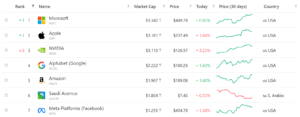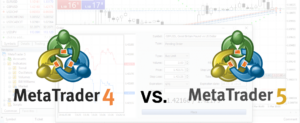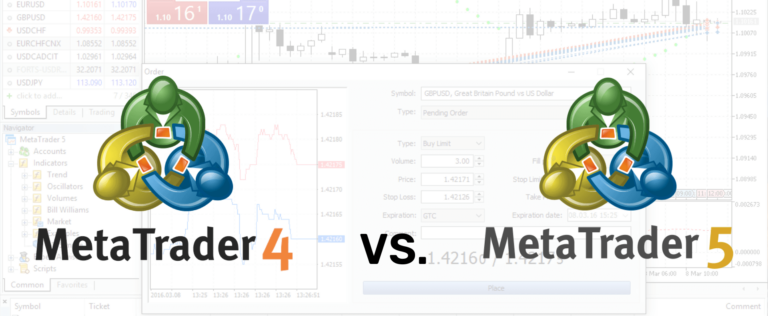Welcome to the exciting world of financial trading! This article delves into the interesting realm of synthetic indices. We will cover the basics of this interesting tool and end up looking at how you can use it effectively in your portfolio. Hopefully, you can learn to use them effectively, and they will help you make profits.
Table of Contents:
What Are Synthetic Indices?
If you are new to synthetic indices, you are in the right place. We will now break them down in basic terms. Think of a synthetic index as a financial creation, a bit like a carefully crafted cocktail. They do not represent a specific group of assets or stocks but are designed to mimic the performance of real-world indices like the S&P 500, Nasdaq or Dow Jones.
Synthetic industries are not constrained by the real-life limitations of traditional markets. They’re like a versatile chameleon, capable of adapting to various market conditions and asset classes. They pool together many underlying assets, such as commodities, currencies, and even cryptocurrencies, into one powerful index.
This is significant as it means you can trade these indices all day, every day, even when traditional markets are closed. Plus, they’re designed to be more accessible, offering lower capital requirements and reduced trading barriers.
So, in a nutshell, synthetic indices are your ticket to a world of limitless trading possibilities. They offer a creative, dynamic and flexible approach to the financial markets that can boost your portfolio.
How Does Synthetic Indices Trading Work?
You should now have some confidence in what synthetic indices are, so we will now look at the mechanics of how they work:
Diverse Underlying Assets: Synthetic indices blend together various underlying assets. These assets can include currencies, commodities, and even cryptocurrencies. The idea is to create an index that reflects the performance of these assets without directly owning them.
Asset Weighting: Each underlying asset in a synthetic index is assigned a specific weight. The weightings are carefully calculated to mimic the behaviour of traditional indices. If you were to track the S&P 500, the weightings of the synthetic index would be designed to mirror the chosen index.
Price Feed: The value of the synthetic index is calculated from real-time price feeds from the underlying assets. The data is updated continuously, so changing market conditions are captured.
24/7 Accessibility: As previously touched upon, synthetic indices are constantly available to trade. Traditional stock markets have opening and closing times, but synthetic indices allow you to trade whenever it suits you.
Leverage: Synthetic indices trading often involves leverage, which means you can control a larger position with a smaller amount of capital. This can amplify both potential gains and losses, so it’s crucial to use leverage wisely.
The Advantages of Synthetic Indices Trading
Why should you be interested in synthetic indices trading? Here are some compelling advantages, some of which have already been briefly touched upon above:
Accessibility: You don’t need a massive bankroll to get started. Synthetic indices offer lower capital requirements, making them accessible to a broader range of traders.
Market Diversity: By blending various assets, synthetic indices allow you to diversify your portfolio more easily. This diversification can help spread risk and enhance the potential for returns.
24/7 Trading: As we mentioned earlier, synthetic indices are available for trading at any time of day or night. This flexibility is ideal for traders with busy schedules.
Reduced Trading Barriers: You can engage in synthetic indices trading without facing some of the barriers found in traditional markets, such as regulatory restrictions or short-selling limitations.
Risk Management: The ability to trade with smaller capital can help with risk management, as you can control your exposure more precisely.
Risks and Challenges
Of course, like any form of trading, synthetic indices come with their fair share of risks and challenges:
Volatility: The diverse nature of synthetic indices means they can be highly volatile. Prices can swing dramatically in a short period, leading to both profit and loss opportunities.
Leverage Risk: While leverage can amplify gains, it can also magnify losses. It’s essential to have a clear risk management strategy in place when trading synthetic indices.
Market Knowledge: To trade synthetic indices successfully, you need a good understanding of the underlying assets and how they interact. Market research and staying informed are crucial.
Broker Selection: Your choice of trading platform and broker can significantly impact your experience. It’s vital to select a reputable and well-regulated broker.
Risk of Overtrading: The accessibility of synthetic indices can lead some traders to overtrade. It’s important to maintain discipline and not get carried away.
Understanding both the advantages and the risks involved in synthetic indices trading is key to making informed decisions in this dynamic and creative trading arena.
Synthetic Indices Trading Strategies
Now you have a base knowledge of synthetic indices, we will look at some effective trading strategies you can use to harness their potential:
Trend Following: This classic strategy involves identifying and trading in the direction of prevailing market trends. By using technical analysis tools like moving averages and trendlines, you can catch and ride market trends within the synthetic index.
Range Trading: Range-bound markets can provide profitable opportunities in synthetic indices trading. In this strategy, you aim to buy at the lower end of a trading range and sell at the upper end, profiting from price oscillations.
Breakout Trading: This strategy involves identifying key support and resistance levels within the synthetic index and entering trades when these levels are breached. Breakouts can lead to significant price movements.
Diversified Portfolio Approach: You can create a diversified portfolio of different synthetic indices, each tracking different asset classes. This approach helps spread risk and offers a balanced approach to trading.
News Trading: Being aware of economic events and market news is crucial for this strategy. Traders seek to capitalise on significant market movements resulting from economic announcements, such as interest rate changes or employment data releases.
Where and How to Start Trading Synthetic Indices
You’re probably excited to jump into the world of synthetic indices trading, but first, you need to know where and how to start:
Choose a Reputable Broker: Start by selecting a reputable broker that offers synthetic indices trading. Look for a broker with a strong track record, regulatory compliance and a user-friendly trading platform.
Account Setup: Once you’ve chosen a broker, set up your trading account. This involves verifying your identity and providing the necessary documentation.
Educational Resources: Take advantage of the educational resources provided by your broker. Most brokers offer tutorials, webinars and guides to help you understand the specifics of synthetic indices trading.
Practice with a Demo Account: Before risking real capital, practise your trading strategies with a demo account. This allows you to get comfortable with the trading platform and test your strategies in a risk-free environment.
Risk Management: Develop a solid risk management strategy. You should start by deciding the amount of capital you’re willing to risk on each trade and then setting stop-loss orders to limit the risk. You should also determine your own clear risk-reward ratio.
Start Small: It is always a good idea that even when you feel ready to trade real money, you start with a small amount. You will still be relatively inexperienced, especially in a live market, and you can gradually increase your position sizes as your confidence grows.
Stay Informed: Keep yourself updated with market news and events that may impact the underlying assets in your chosen synthetic indices.
Monitor and Adapt: Continuously monitor your trades and adapt your strategies as market conditions change. This adaptability is a key skill for successful synthetic indices trading.
Remember, like any form of trading, success in synthetic indices trading takes time, practice, and a commitment to learning. By following these steps and staying disciplined, you’ll be well on your way to exploring this exciting world of trading opportunities.
Synthetic Indices Takeaways
Hopefully, you have learnt all the basics about synthetic indices, along with the advantages and challenges of trading them. If you feel ready, it is time for you to select a broker and start practising your trading strategy, we would advise that you start in a demo account.
Remember, it is important always to keep educating yourself, monitoring your results, and staying tapped into the ever-changing markets. With any kind of trading, there is always a risk, and you should never stake what you cannot afford to lose. Synthetic indices trading can be a rewarding adventure, but like any adventure, it requires preparation and a steady hand.
Whether you’re a seasoned trader or just beginning your journey, the world of synthetic indices is brimming with opportunities for those willing to explore. As you step into this creative and versatile trading arena, we wish you success and a thrilling journey ahead!















